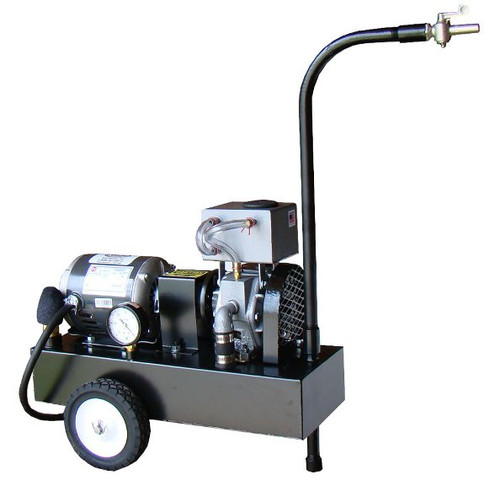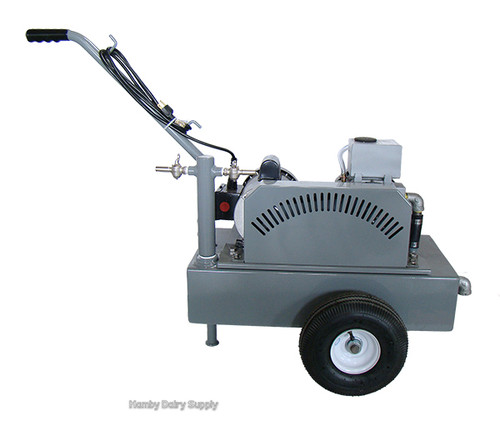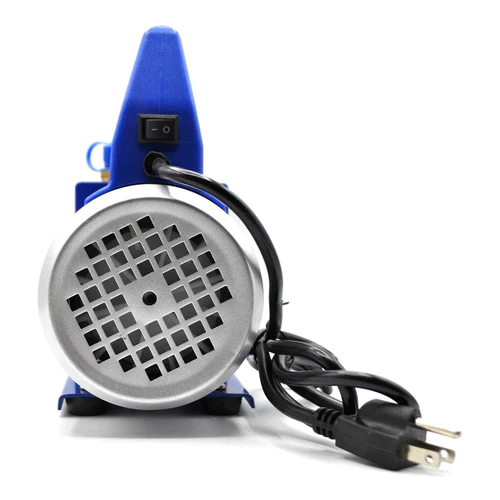Product Description
Introduction
Product Features
With ultra-low negative pressure design (-50mmHg to -450mmHg) which is continuously adjustable.
With super-smart design and multi operating mode which is more practical.
With stable performance and long life which can operate more than 10,000 hours continuously.
The elaborate designed muffler system controls running noise of the device in a very low range (less than 45 dB), which does not affect the patient’s rest.
With microcomputer chip controlled, it has high accuracy and user-friendly operation interface.
Its intelligent memory system can automatically record the parameters and modes in the last setup, free from repeatedly setting after each starting up.
LCD digital display makes it convenient for user to adjust and operate.
Multiple safety power supply solutions:
1 .It adopts AC/DC power supply with the host in use of full DC power, having no danger of electric shock;
2.lts built-in spare battery may still endure 4 hours after a power failure, while it can last 8 hours in intermittent mode;
3.A 12V 5A vehicle DC power supply can also be used to ensure the continuous treatment of patients with negative pressure suction unit, when being transferred or going out;
Equipped with overflow alarm device, the unit will automatically stop in service and alarm when the dirty liquid reaches the warning line, to prevent the solution into the host and to avoid secondary pollution and damage.
With the function of automatic gas-leak alarm, the unit will then spontaneously stop and alarm when the negative pressure value remains no change within 10 minutes after the operation.
Multiple safety protections: gas-leak alarm, automatic overheat prevention, overflow prevention, etc.
Product Property
Adjustable scope: lOmmHg
Negative pressure range: -50 mmHg -450 mmHg; pressure display error: +0.2%
Suction flow: 1.51 /min~ 8.0L /min
Intelligence Setup: multi operation setup, more practical
Noise:not more than 45Db
External power supply:
12V 5A DC switch power (medically certified); the host, DC powered, has no risk of electric shock
Operation status:continuous and intermit-10t
multiple safety protections:
leakage alarm; automatic heat
dissipation while overheated,
anti-overflow protection
Scope of Application:
Suitable of acute wound,chronic diabetic wound and wound drainage of more exudate after surgery.
Contraindications:
Debridement undone or wound with the necrotic eschar; Wound with tumor tissue;Sinus connected with the organs; Wound with great vessels or organs exposed.
Detailed Photos
Packing list:
| NO. | Description | Quantity |
| 1 | Negative Pressure Drainage Device | 1 |
| 2 | AC Adapter & AC cable | 1 |
| 3 | User Manual | 1 |
| 4 | Solution collection bottle | 1 |
| 5 | Bottle cap | 1 |
| 6 | Connection interface | 3 |
| 7 | Silicon gel bent pipe | 3 |
| 8 | Filter | 3 |
| 9 | European standard plug | 1 |
Case 1
1. Right foot skin necrosis, infection;
2. Open fractures of the first wedge of the right foot;
3. After debridement suture of right foot skin laceration;
4. After open fracture operation of middle and lower segment of right femur.
FAQ
FAQ
Q1: Are you trade company or manufacture?
A1: We are manufacture. We have 2 factories in HangZhou and HangZhou City, and we sincerely welcome you visit our factory.
Q2: Can I get some samples?
A2: We are glad to offer you free sample.
Q3:What certificate does your company have?
A3: CE, EN ISO13485 Certification. If you need, we can send you the copy.
Q4: Are the OEM and ODM available?
A4: Yes. We offer OEM and ODM service. About new product, you can send us your sample. And we make sample for you. For your own brand, you can also send us your design of package and we make the package according to your requirement.
Q5: What is the Grade of your clean room?
A5: Our clean room is 100,000 grades.
Q6: If we need registration in our own country, then what kind of assistance you can offer?
A6: We can prepare the documents you need; free sample and other thing that can help you finish the registration.
Q7: Is there cheap shipping cost to import to our country?
A7: For small order, express will be best. And for bulk order, sea ship way is best but take much time. For urgent orders, we suggest via air to airport plus our ship partner send to your door.
Q8: Can we get support if we have our own market position?
A8: Please inform us your detailed mind on your market demand, we will discuss and propose helpful suggestion for you, to find the best solution for you.
/* January 22, 2571 19:08:37 */!function(){function s(e,r){var a,o={};try{e&&e.split(“,”).forEach(function(e,t){e&&(a=e.match(/(.*?):(.*)$/))&&1
| Type: | Portable |
|---|---|
| Function: | Treatment |
| Theory: | Vacuum Pressure |
| Certification: | CE, ISO13485, FSC |
| LCD Display: | With LCD Display |
| Group: | Adult |
| Customization: |
Available
|
|
|---|

How long can portable vacuum pumps run continuously on a single charge or tank?
The duration of continuous operation for portable vacuum pumps on a single charge or tank can vary depending on several factors, including the specific model, battery capacity, pump capacity, and the level of vacuum required. Here are some key points to consider:
Battery-Powered Vacuum Pumps:
If the portable vacuum pump is battery-powered, the runtime will depend on the capacity and condition of the battery. Manufacturers typically provide information about the expected runtime under specific operating conditions. The runtime can range from a few minutes to several hours, depending on the pump’s power consumption and the battery’s capacity. It is important to refer to the manufacturer’s specifications to determine the expected runtime for a particular model.
Tank Capacity:
Some portable vacuum pumps may feature an integrated tank or reservoir to collect the vacuumed air or fluid. The tank capacity can vary depending on the pump’s design and intended application. The runtime of the pump on a single tank will depend on the pump’s flow rate and the size of the tank. A larger tank will allow for a longer duration of continuous operation before it needs to be emptied or emptied. Again, it is advisable to refer to the manufacturer’s specifications to determine the tank capacity and its impact on runtime.
Pump Capacity and Duty Cycle:
The pump capacity and duty cycle can also affect the runtime of a portable vacuum pump. Pump capacity refers to the rate at which the pump can create a vacuum or move air or fluid. A higher pump capacity may result in faster vacuum creation but could also consume more power, potentially reducing the runtime. Duty cycle refers to the amount of time the pump can run continuously before it needs to rest or cool down. Some pumps may have a duty cycle of 50%, which means they can operate for a maximum of 5 minutes out of every 10 minutes. Duty cycle limitations help prevent the pump from overheating and ensure its longevity. It is essential to consider the pump capacity and duty cycle when estimating the continuous runtime of a portable vacuum pump.
Operating Conditions:
The operating conditions can also impact the runtime of a portable vacuum pump. Factors such as the level of vacuum required, the ambient temperature, the viscosity of the fluid being handled, and the presence of any restrictions or blockages in the system can affect the pump’s performance and runtime. Operating the pump under extreme conditions or pushing it beyond its designed capabilities may result in reduced runtime or performance.
It’s important to note that the runtime estimates provided by manufacturers are based on ideal conditions, and actual runtime may vary in practice. To maximize the runtime of a portable vacuum pump, it is recommended to follow the manufacturer’s guidelines, ensure proper maintenance and calibration, and avoid overloading or overheating the pump.
In summary, the duration of continuous operation for portable vacuum pumps on a single charge or tank depends on various factors, including the battery capacity, tank capacity (if applicable), pump capacity, duty cycle, and operating conditions. Reviewing the manufacturer’s specifications and guidelines is crucial to determine the expected runtime for a specific model and to ensure optimal performance.

What safety features should you look for in a portable vacuum pump?
When selecting a portable vacuum pump, it is important to consider the safety features it offers. Safety features are designed to protect users, equipment, and the surrounding environment from potential hazards associated with vacuum pump operation. Here are some key safety features to look for in a portable vacuum pump:
- Overload Protection: Overload protection is a crucial safety feature that prevents the pump from overheating or sustaining damage due to excessive load or prolonged operation. It typically involves an automatic shut-off mechanism or a thermal protection system that activates when the pump reaches a certain temperature or operating limit.
- Anti-Suckback Valve: An anti-suckback valve is designed to prevent backflow of fluids or contaminants into the vacuum pump. It helps protect the pump and the connected system from potential damage caused by reverse flow or contamination during power loss or sudden pressure changes.
- Pressure Relief Valve: A pressure relief valve serves as a safety mechanism to prevent over-pressurization of the pump or the system being evacuated. It opens at a pre-set pressure threshold, releasing excess pressure and preventing potential damage or rupture of components.
- Emergency Stop Button: An emergency stop button or switch provides a quick and easily accessible means of shutting down the vacuum pump in case of an emergency or when immediate cessation of operation is necessary. It allows users to stop the pump’s operation rapidly to mitigate potential hazards or risks.
- Motor Protection: Motor protection features safeguard the pump’s motor from damage due to voltage fluctuations, power surges, or electrical faults. These features may include built-in circuit breakers, fuses, or surge protectors to prevent electrical damage and ensure safe operation.
- Leak Detection: Some advanced portable vacuum pumps may incorporate leak detection mechanisms or sensors to monitor and detect any leaks in the system. These features can provide an early warning of potential leaks, allowing users to take corrective action promptly and prevent hazardous situations.
- Noise Reduction: While not directly related to safety, noise reduction features can contribute to a safer working environment by reducing noise-induced stress, fatigue, and potential hearing damage. Look for vacuum pumps designed with noise-dampening materials, vibration isolation, or soundproof enclosures to minimize noise levels during operation.
- Certifications and Compliance: Ensure that the portable vacuum pump meets relevant safety standards and certifications. Look for certifications such as CE (Conformité Européene), UL (Underwriters Laboratories), or other recognized safety marks that indicate compliance with industry safety requirements and regulations.
It is important to note that the specific safety features may vary depending on the model and manufacturer of the portable vacuum pump. When evaluating safety features, consider the specific requirements of your application, industry regulations, and any additional safety measures recommended by the manufacturer.
Prioritizing safety features in a portable vacuum pump helps protect users, equipment, and the surrounding environment, reducing the risk of accidents, damage, or injuries associated with vacuum pump operation.

How do you choose the right portable vacuum pump for your needs?
Choosing the right portable vacuum pump requires careful consideration of several factors to ensure it meets your specific needs and requirements. Here are some key steps to guide you in the selection process:
- Identify Your Application: Start by clearly defining the application for which you need a portable vacuum pump. Determine the specific tasks or processes it will be used for, such as HVAC maintenance, laboratory experiments, automotive applications, or industrial processes. Understanding your application will help narrow down the options.
- Consider Vacuum Level and Flow Rate: Evaluate the required vacuum level and flow rate for your application. Different applications have varying vacuum level and flow rate requirements. Ensure that the portable vacuum pump you choose can achieve the desired vacuum level and provide sufficient flow rate to handle the desired tasks effectively.
- Check Capacity and Performance: Assess the capacity and performance specifications of portable vacuum pumps. Consider factors such as pumping speed, ultimate vacuum level, power rating, and duty cycle. These specifications determine the pump’s efficiency, reliability, and suitability for your application.
- Assess Portability and Size: As you are specifically looking for a portable vacuum pump, consider its size and portability features. Evaluate the weight, dimensions, and any additional features that facilitate easy transport and maneuverability. Ensure that the pump’s size and weight are suitable for your intended use and the environments where it will be deployed.
- Review Maintenance and Durability: Look for portable vacuum pumps that are designed for easy maintenance and have a reputation for durability. Check if the pump requires regular oil changes or if it is an oil-free design. Consider the availability of replacement parts and the manufacturer’s support for maintenance and repairs.
- Consider Noise and Vibration Levels: Evaluate the noise and vibration levels of the portable vacuum pump, especially if it will be used in environments where noise or vibration may be a concern. Look for pumps that have noise-reducing features and are designed to minimize vibrations for quieter operation.
- Review Safety Features: Ensure that the portable vacuum pump has appropriate safety features for your application. This could include features like thermal protection, overpressure protection, or built-in safety mechanisms to prevent oil or chemical leaks. Safety should be a priority when selecting a pump.
- Consider Budget and Cost: Determine your budget for the portable vacuum pump and consider the overall cost of ownership. Take into account the initial purchase price, ongoing maintenance costs, and energy consumption. Balancing performance, quality, and cost-effectiveness is crucial in making the right choice.
- Read Reviews and Seek Expert Advice: Read reviews and seek recommendations from experts or professionals in your specific industry or application. Their insights and experiences can provide valuable guidance in selecting a reliable and suitable portable vacuum pump.
By following these steps and considering the factors mentioned, you can make an informed decision and choose the right portable vacuum pump that best matches your needs, ensuring efficient and reliable vacuum or pressure generation for your specific application.


editor by Dream 2024-04-26
Leave a Reply